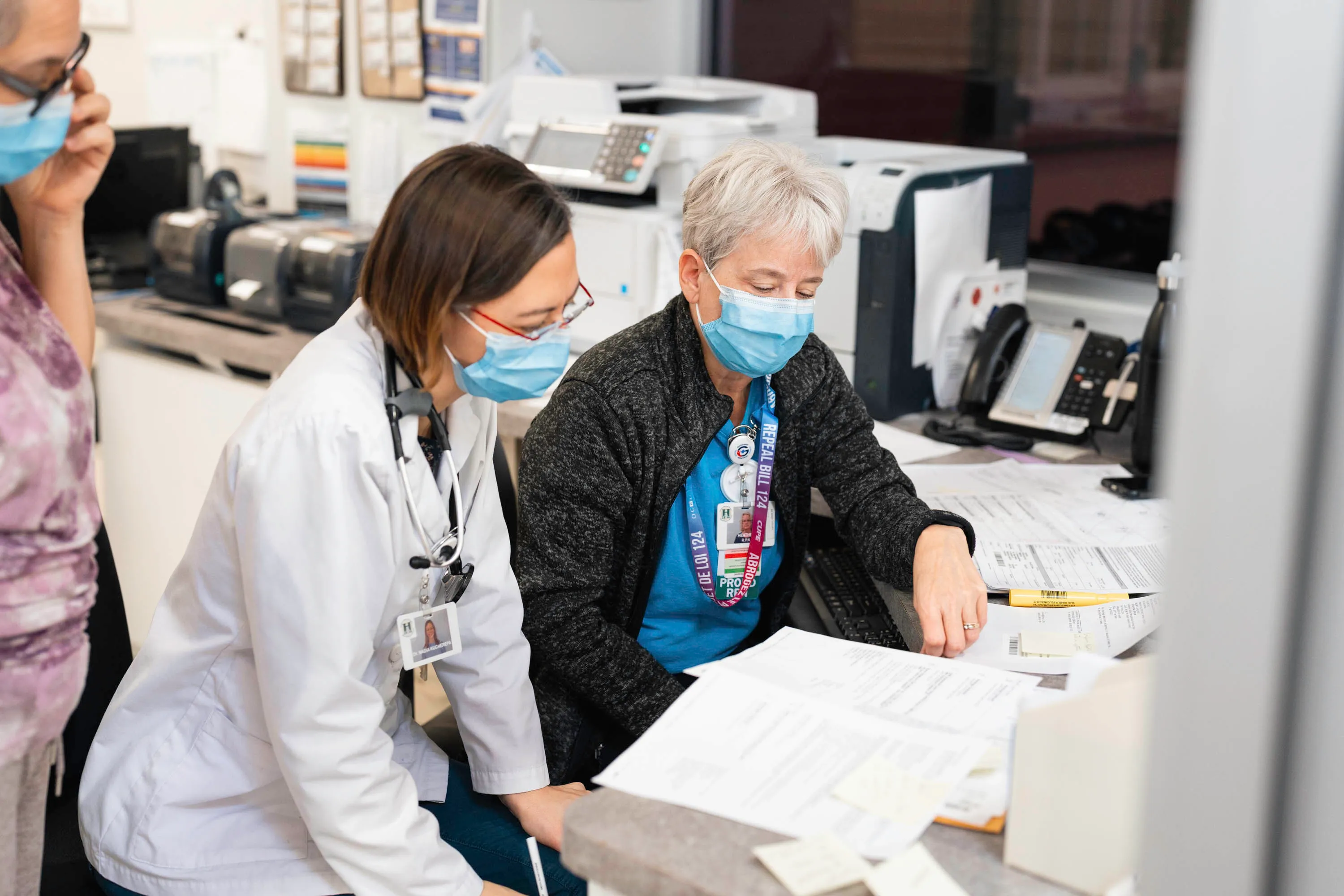MRSA VRE Rates

Our Infection Rates
The method of calculation of the MRSA bacteremia infection rate for the reporting period (on a quarterly basis) is:
( Number of nosocomial patients with laboratory identification of MRSA bacteremia x 1000 ) / ( Total number of patient days in the quarter )
Where the numerator is the total number of newly identified cases for MRSA bacteremia associated with the reporting facility, for the reporting period. The denominator is the total number of in-patient days for the reporting period. There are no exclusion criteria.
The method of calculation of the VRE bacteremia infection rate for the reporting period (on a quarterly basis) is:
( Number of nosocomial patients with laboratory identification of VRE bacteremia x 1000 ) / ( Total number of patient days in the quarter )
Where the numerator is the total number of newly identified cases for VRE bacteremia associated with the reporting facility, for the reporting period. The denominator is the total number of in-patient days for the reporting period. There are no exclusion criteria.
{{mrsa-vre="/edit-global-components"}}
Information for Patients and Families
Hôpital Glengarry Memorial Hospital (HGMH) takes your care and your safety very seriously and we are extremely committed to transparency. On a quarterly basis, beginning in December 2016, we will be reporting our infection rates on our website.
If you have any questions about the information below or about our hospital's infection prevention and control program please contact Infection Prevention and Control Practitioner at 613-525-2222 extension 4114.
What does hospital acquired mean?
Sometimes when patients are admitted to the hospital, they can get infections. This is a hospital-acquired infection. In the case of either MRSA or VRE, this may mean that symptoms begin 72 hours after admission to the hospital;
What is Methicillin-resistant Staphylococcus aureus (MRSA)?
Methicillin-resistant Staphylococcus aureus (MRSA) is a type of bacteria that is resistant to certain or all types of the beta-lactam classes of antibiotics such as penicillins, penicillinase-resistant penicillins (e.g. cloxacillins and cephalosporins. MRSA are strains of S. aureus that have an MIC to oxacillin of greater than or equal to 4 mcg/ml. or contain the mecA gene coding for penicillin binding protein 2a (PBP 2a).
What is Vancomycin-resistant Enterococci (VRE)?
Enterococci are bacteria that are normally present in the human intestines and in the female genital tract and are often found in the environment. These bacteria can sometimes cause infections. Vancomycin is an antibiotic that is often used to treat infections caused by enterococci. In some instances, enterococci have become resistant to this drug and thus are called vancomycin-resistant enterococci (VRE). VRE have a minimal inhibitory concentration (MIC) to vancomycin of 32 mcg/ml. They contain the resistance genes VAN-A or VAN-B.
What are the risk factors for MRSA?
Risk factors for MRSA acquisition include invasive procedures, prior treatment with antibiotics, prolonged hospital stay, stay in an intensive care or burn unit, surgical wound infection and a close proximity to a colonized person. MRSA can also be transmitted from mother to child through breast milk.
What are the risk factors for VRE?
Risk factors for VRE include severity of underlying illness, presence of invasive devices, prior colonization with VRE, antibiotic use and length of hospital stay.
How is MRSA transmitted?
The single most important mode of transmission of MRSA in a health care setting is via transiently colonized hands of health care workers who acquire it from contact with colonized or infected patients, or after handling contaminated material or equipment. The unrecognized colonized patient presents a particular risk for transmission to other patients.
How is VRE transmitted?
The single most important mode of transmission of VRE in a health care setting is via transiently colonized hands of health care workers who acquire it from contact with colonized or infected patients, or after handling contaminated material or equipment.
How is MRSA Diagnosed?
All admitted patients are screened for MRSA, the nurse will take swabs of your nose, perianal, and any broken areas of your skin. The testing allows us to find carriers quickly and prevent the spread to other patients. The results will be reported to your physician.
How is MRSA treated?
Many bacteria live on and in the body without causing disease/infection. This is colonization. Colonization does not require treatment. These same bacteria under the right conditions can cause disease. This is infection.
MRSA can colonize in the nose, the skin and the respiratory tract. It can cause infection in the respiratory tract, in surgical sites and in the blood. Treatment depends on how sick patients are with the disease. VRE rarely causes infection.
What precautions are used to prevent the spread of MRSA in the hospital?
If you are found to carry MRSA, you will be placed in a single room or one shared with another patient with MRSA. You will be placed under special Infection Control precautions. This is to ensure that the germs cannot spread to other patients. Your medical care that you require will not be affected.
What is HGMH doing to Improve patient safety?
- Hand hygiene program with increased access to alcohol-rub based hand rub
- Screening patients on admission for silent carriage of resistant organisms
- Use of single rooms, masks, gowns, and gloves to control transmission
- Increased housekeeping resources
- Education and awareness campaigns for patients and health care providers

